Once I returned from Huayna Potosi I took the opportunity to rest and recuperate in La Paz for a few days before leaving for Uyuni. Uyuni is the entryway to Bolivia’s salt flats, and it’s common for people to cross the border into Chile at the end of a three-day long trip across the high-altitude plains, and that is exactly what I did.
There were 7 of us in the car, 6 tourists and 1 driver. On our first day we crossed the salt flats, a desert of dazzling white salt crystals extended out as far as the eye could see. In certain places the water and the salt conspire to form an immense mirror that reflects the light of the sky back at you. The salt crunches underfoot, the same noise as when snow compacts under your boot, but your feet don’t sink into the ground. It’s cold at that altitude, the sun can warm you, even burn you, but the heat doesn’t linger in the body. There was an island in the middle of the flats, a reasonably large rocky outcrop populated by century-old cacti. We wandered around, observing the rock formations and the way that the horizon ate at the edges of the flats, the blue of the sky and the spotlight-sun were reflected back at us as we looked down. It’s incredible that anything could live in such a barren place. That night’s sunset has faded from my mind, the colours aren’t exact, but I remember they were dazzling, the fading sun casting aurorae over the mirror-water of the flats.
Our second day we crossed into the desert. We stopped at several high-altitude lakes, their water filled with a variety of chemical compounds that sound like a danger to life but in fact give rise to the pink in flamingos and a variety of hues in algae. The wind felt like it would blast you off your feet, whipping through your hair and causing great ripples to course their way across the lakes. The type of wind that leaves the edges of your ears stinging. There’s a surprising amount of life in the desert, and we were blessed to see many Viscachas (which look like a cross between a Chinchilla and a Rabbit) during one of our stops. Even the rock appears to be living, through erosion the wind seems to have breathed life into it, carving lithic valleys and trees to stroll around. In the evening, we stopped at some geysers, the steam rose from them gently in the evening light, a grey ribbon of water vapour wafting from the bubbling mud, the smell of sulphur nudging at the edge of your nose. That night we took the opportunity to relax in some hot springs, the warmth seeped its way through your body and deposited relaxation there, the sky was dark above and glistened with stars.
On our third day we made our way to the Chilean border, across the great plains and their volcanic sentinels. I bade farewell to Bolivia, crossed the border, and began the final chapter of my time in South America.
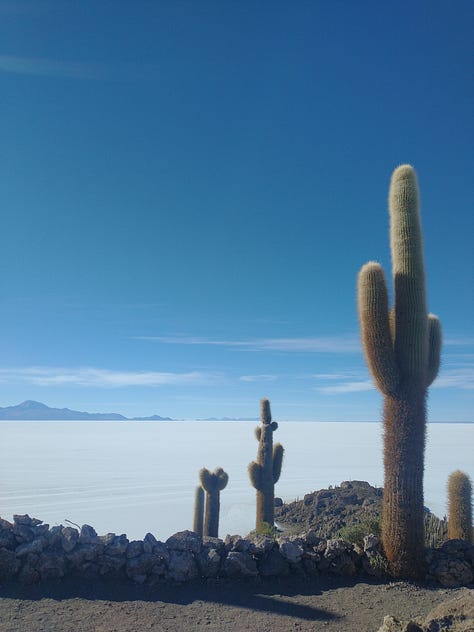
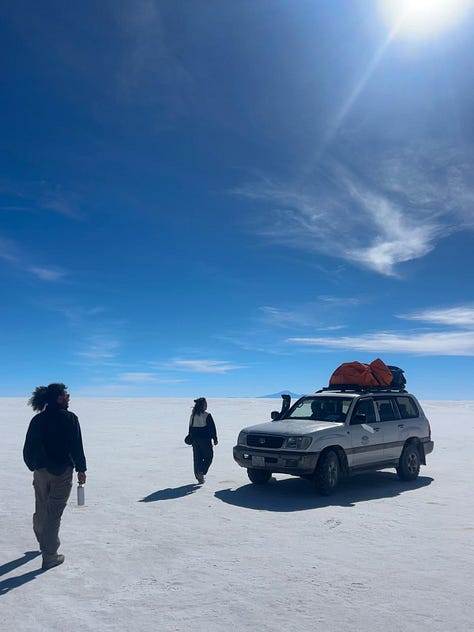
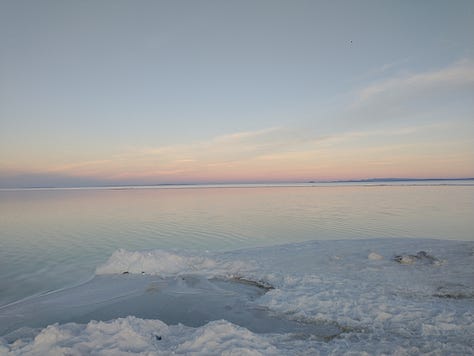
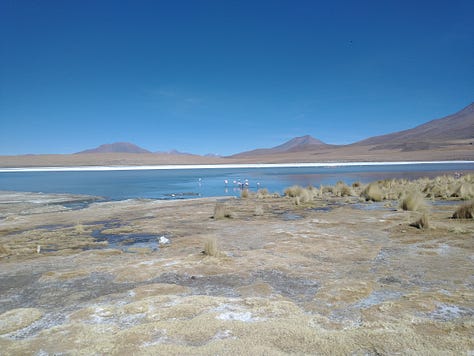
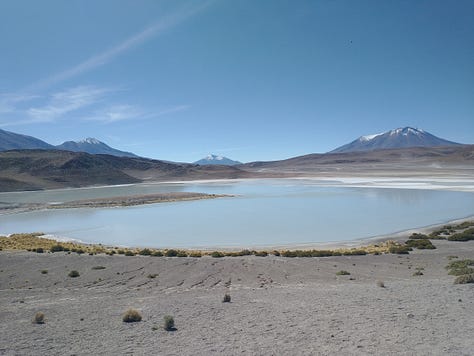
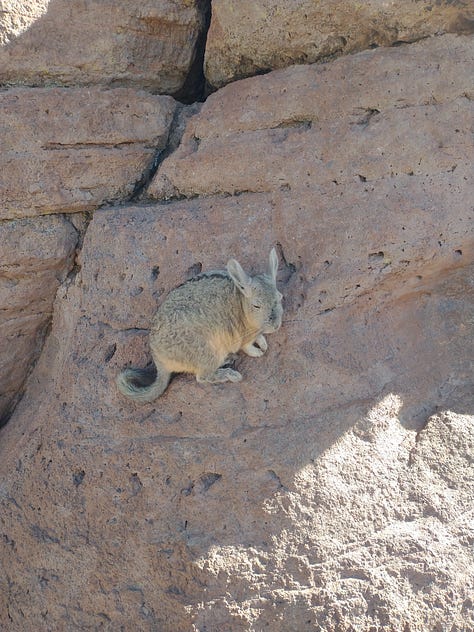
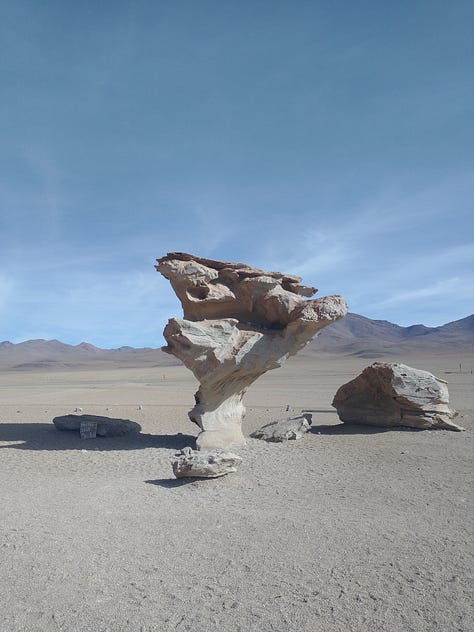
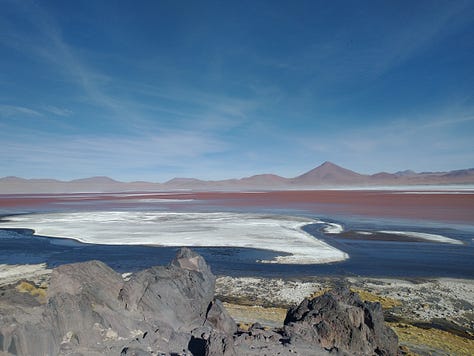
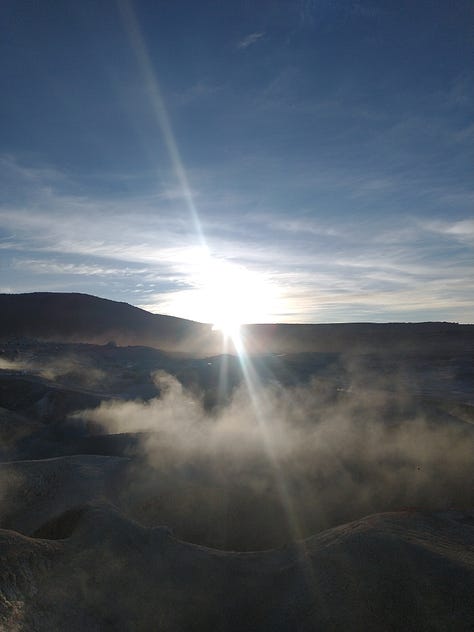
Thanks for reading, if you want to keep up to date, please make sure to subscribe!
In case you missed my previous posts:
Travel Journal 11: Flow State Part 3: I Peak at 27
Travel Journal 10: Flow State Part 2: La Paz
Travel Journal 9: Flow State Part 1: Isla del Sol
Travel Journal 8: Separating Country from Company
Travel Journal 7: Interlude: Isla del Sol
Travel Journal 6: Echoes
Travel Journal 5: A Sensation of Standing in Some Other System
Travel Journal 4: Glacial Shift
Travel Journal 3: I Get Stuck at the Edge of the World
Travel Journal 2: Finding Your Axes
Travel Journal 1: Beginnings Are Such Delicate Times
Short Story: If You're Listening

